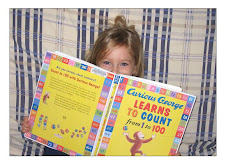
Bibliographic Information
Mecum, Ryan. ZOMBIE HAIKU. Cincinnati, OH:F+W Publications. ISBN: 9781600610707.
Summary and Analysis
Mecum focuses on the form of haiku for this humorous, and at times grotesque, collection. It begins with a journal entry of a boy named Chris, possibly the last human, locked in an airport bathroom with "a journal, a pen, and an arm of a dead man who came alive and died again." Following the form of haiku, all poems are short with the 5 syllable first line, 7 syllable second line, and 5 syllable 3rd line pattern while at the same time telling a new scene from page to page. The pattern remains even as the main narrator turns into a zombie. The quality of these poems is high as they are definitely original, use language in a unique way, and leads the reader to imagine very detailed images and scenes.
These poems have a special audience. Their appeal is mostly in the grotesque topics of flesh eating zombies and decaying flesh, but even those readers who may not care for the images can enjoy the creativity and, at times, humor. They stimulate a variety of thoughts as the narrator's day began just like any other day, but then proceeds to get worse and more unusual. Teenagers and adults will both like these poems, though the gruesome details may lead to some not finishing the book.
Illustrations are more than sketches in this twisted book. There are blood splatters, photos of the living dead, hair folicles, and finger nails. In other words, this is a poetry book that draws the reader into the plot both with the text and the visual elements.
Highlighted Poem
Our group slowly thins.
One by one, we slip away.
off looking elsewhere.
Nothing left but bones
Blood stains each building corner
which some of us lick.
Down the empty streets,
my gurgles echo off walls
to which I moan back.
Connections
Instead of focusing on the theme (zombies), which would probably not be age appropriate for most groups, one could teach haiku or on the transforming of the narrator. Other methods would be to choose a theme and have all the students write a haiku based around that theme. Thus creating a class anthology. I also really enjoyed how this can provide a great example to the variety of poetry out in the world. It needn't all be nature poems or contemplating poems, but sometimes they are simply entertaining and a fun read. It would be difficult to find someone who says they don't like poetry to not enjoy poetry a bit more after reading this book.






